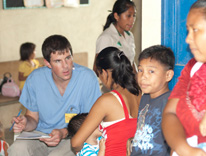
The heat was stifling, lying like a wet blanket over the tiny village of El Pomal in southwest Guatemala. A CU School of Medicine team sweated through their pale blue scrubs as a line of children snaked around the concrete school house.
“We have seen 12 children so far and nine had diarrhea for more than two weeks and about two-thirds have parasites,” said Edwin Asturias, MD, director for Latin America at the Center for Global Health, part of the Colorado School of Public Health. “What we are seeing is a chronic cycle of poverty.”
There were children with kidney disease, infections, anemia and malnutrition. Ten-year-olds looked like 6-year-olds, tiny with match stick arms and legs. A scrawny dog poked around looking for scraps before drifting off.
“When you see a dog malnourished, you know there isn’t a lot of food around,” Asturias said.
But he and his team weren’t here just to examine children, they came to assess the wider needs of the population and lay the groundwork for a revolutionary public-private partnership that will usher in the university’s first permanent medical presence in a developing country. If successful, it could lead to similar outposts around the world.
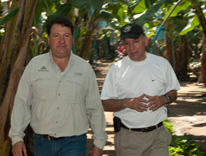 The project was spurred by a $1 million donation from the Jose Fernando Bolaños Foundation to build a clinic, research lab, housing complex and conference center on 10-acres of land near Banasa, a banana plantation owned by the Bolaños family. Students and faculty at the CU Denver College of Architecture and Planning designed the first draft of the facility and may help in its construction.
The project was spurred by a $1 million donation from the Jose Fernando Bolaños Foundation to build a clinic, research lab, housing complex and conference center on 10-acres of land near Banasa, a banana plantation owned by the Bolaños family. Students and faculty at the CU Denver College of Architecture and Planning designed the first draft of the facility and may help in its construction.
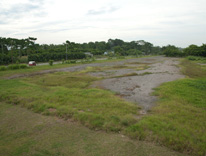 “This is an international experiment and that means you must investigate the culture and environment of another country before you start making plans,” said Phillip Gallegos, associate professor of architecture whose students worked on the project. “In the future, many of our students will be working internationally and they will need to design things that work for China, Italy, Guatemala or wherever they may be. This is very valuable experience for them.”
“This is an international experiment and that means you must investigate the culture and environment of another country before you start making plans,” said Phillip Gallegos, associate professor of architecture whose students worked on the project. “In the future, many of our students will be working internationally and they will need to design things that work for China, Italy, Guatemala or wherever they may be. This is very valuable experience for them.”
The gift is unique in many ways.
“It represents a great partnership between a Guatemalan company and a public university in the U.S.,” said Asturias, an assistant professor of pediatrics at the School of Medicine who is originally from Guatemala. “It’s also unique because the traditional way global health happens is money flowing from north to south. This model is different; the funding is coming from south to north.”
The goal is to improve the health of the over 3,000 plantation workers along with the nearly 24,000 people in the surrounding villages.
“As you can see our operation is practically in the middle of nowhere. Potable water and electricity are limited. As businessmen, we wanted a world class organization with world class resources to help us,” said Fernando Bolaños, CEO of AgroAmérica which owns the plantation. “We are making a huge, formal commitment and we want to see tangible results. I have known Edwin Asturias for years and I consider him one of the top public health doctors in the world. We are proud that he is Guatemalan and has such an incredible social conscience.”
The company, which stresses corporate social responsibility in a business not known for such attitudes, has sponsored previous university health programs in Guatemala. In 2011, they supported a Center for Global Health initiative to collect baseline data on maternal and child health outcomes in the same area. But this is their biggest, most far reaching gift yet.
Gustavo Bolaños, chief operating officer of AgroAmérica, said Guatemala is a nation of extremes with a thin layer of very wealthy people atop millions of very poor. His father, Don Jose Fernando Bolaños, came from a humble background and built a successful company yet never lost sight of his moral obligations.
“God has given us all many talents,” Gustavo said. “The more he gives you the more you have to give back.”
Asturias hopes to see a regular rotation of physicians, students and researchers from the university coming through Guatemala as early as 2013.
“We are not coming here with predetermined ideas,” he said. “We are not giving them what we think they need, but finding out what they actually need.”
Lush, green and full of want
The Trifinio region of Guatemala, not far from the Pacific Ocean, is among the poorest parts of this densely populated nation. On the surface it seems a tropical paradise, verdant, lush and studded with papaya and coconut trees. Vibrant red and yellow orchids wrap around palm trunks and iguanas peep from pastel roof tops.
But basic hygiene is lacking. Residents often live in homes with dirt floors shared with livestock. The rainy season brings floods causing toilets to overflow and contaminate drinking water.
Doctors are few, hospitals fewer and most demand payment before performing services. People go into debt trying to pay medical bills or they seek help from village curanderos – traditional healers – or priests or pastors. Sometimes they pay bills rather than eat.
In El Pomal, Asturias talked to a woman who took her son to a curandero who claimed he suffered from `pilitis,’ a phony disease that she charges to `heal’ with an injection of some unknown substance.
Asturias shakes his head.
“This is what happens when there is no medical oversight,” he said. “When you have no health system available, you ask for help wherever you can get it.”
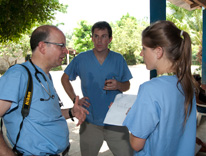 Asturias was joined by Lauren Mehner, a second-year medical student, Darren Elbovi, a fourth-year medical student and James Gaensbauer, a pediatrician and infectious disease fellow who works at Children’s Hospital Colorado.
Asturias was joined by Lauren Mehner, a second-year medical student, Darren Elbovi, a fourth-year medical student and James Gaensbauer, a pediatrician and infectious disease fellow who works at Children’s Hospital Colorado.
Mehner, who studied Spanish in Mexico, was working with local parents on a child development and reading project called Bright Beginnings while Eblovi was jabbing little fingers to test for anemia. The sobbing of children, more scared than hurt, echoed throughout the village.
Gaensbauer did medical exams with Asturias in a cement block room as children and mothers peered through the door and window. Smoke from fires beneath boiling vats of tamales wafted in.
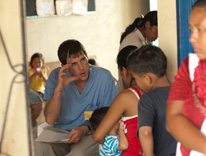 “We have found that between the ages of three and seven, 60 percent of children here have anemia,” said Eblovi, a towering, easy-going Boulder native who spent over two years as a Peace Corps volunteer in El Salvador. “If you have anemia very young, your IQ and development is much lower.”
“We have found that between the ages of three and seven, 60 percent of children here have anemia,” said Eblovi, a towering, easy-going Boulder native who spent over two years as a Peace Corps volunteer in El Salvador. “If you have anemia very young, your IQ and development is much lower.”
He said many of these ailments are easily treated in a modern clinic. Anemia, for example, can be helped by iron supplements. There were children with cleft palates and other deformities that could be remedied with simple surgeries. One boy’s thumb was fused to his forefinger, another easy fix in most hospitals.
But not everything was easy. A sullen, listless boy stood before Asturias and Gaensbauer with swollen lymph nodes on his neck and a puffy face. They suspected kidney disease. Another child could only stand up in slow stages. He suffered a kind of muscular dystrophy and was getting no treatment for it.
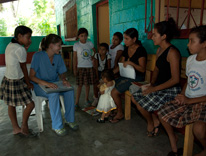 On a bench a few yards away, Mehner read to children from a book with pictures of every day items with the names in Spanish. For many kids, this was the first book they ever owned and they were utterly entranced. Even older children wanted a copy. A thin 11-year-old girl hung around all afternoon hoping to get one but there were none left.
On a bench a few yards away, Mehner read to children from a book with pictures of every day items with the names in Spanish. For many kids, this was the first book they ever owned and they were utterly entranced. Even older children wanted a copy. A thin 11-year-old girl hung around all afternoon hoping to get one but there were none left.
It was hard not to wonder how her life, her imagination and her future might be different had she and the others had easy access to such things.
A problem of water, hygiene
Perhaps the most important part of the visit was the collecting of blood and stool samples to determine the extent of the anemia and parasite problem in the region.
Every night the specimens were taken back to Asturias’s family home for testing. The house sits on a sprawling coffee plantation in the cool, misty highlands about an hour from the steamy villages below. This is where the students lived during their time in Guatemala.
Asturias spent his childhood here, learning to wield a machete long before his hands ever held a scalpel. He set up a microscope in his library where Mehner, Eblovi and Gaensbauer scoured slides for malevolent microbes.
The first sample revealed four kinds of worms and parasites.
“Parasites are something we don’t see a lot of in the U.S. They are a manifestation of poverty. And that’s why I’m here, to do a reconnaissance mission so to speak, to get the lay of the land and level of need in Guatemala,” said Gaensbauer, a Denver native who previously worked in Nepal and American Samoa. “Having a permanent base will be great for the community and for us. A lot of people come and go but that is just a band aid.”
About two-thirds of all children tested had parasites, the result of poor hygiene, inadequate sanitation and contaminated water.
Jose Cordoba Lopez, a banana plantation worker, said his kids regularly experience bouts of diarrhea.
“When they get sick I take them to a clinic but they don’t have the medicine we need,” he explained.
The problem of hygiene was illustrated the next day when a family was found washing dishes in a muddy river.
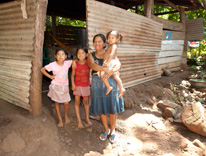 Seven children and their parents shared one room in a dirt floor home comprised of four slabs of rickety metal leaning precariously against each other. Chickens and ducks splashed in buckets of filthy water in the middle of the floor. The only obvious food was a few tortillas and a cantankerous pig tied to a tree.
Seven children and their parents shared one room in a dirt floor home comprised of four slabs of rickety metal leaning precariously against each other. Chickens and ducks splashed in buckets of filthy water in the middle of the floor. The only obvious food was a few tortillas and a cantankerous pig tied to a tree.
“There is so much education that needs to be done here,” said a local health worker, as the smiling children proudly showed off their home.
At least they appeared healthy. Later that morning, a painfully thin couple in threadbare clothing arrived outside a clinic.
“The woman has chest pains and diabetes. The man is completely malnourished. He is 41 but looks like he’s 60,” Asturias said, as they slumped against a wall. “He doesn’t make enough to feed his family so all of his children have left him. As a doctor in this situation, you feel completely impotent.”
They were given antibiotics and oral rehydration medicine. A collection was taken for them and they were on their way.
Difficult but inspiring
The work was exhausting, occasionally frustrating, but intensely rewarding.
Mehner, from Cape Girardeau, MO, said the experience had inspired her. She had earlier worked for Stephen Berman, MD, the renowned director of the Center for Global Health, on the Bright Beginnings program in Colorado. She wants to eventually design aid programs around the world.
“I’d love to cure cancer but I’d also like to eradicate the things we can cure now like diarrhea,” she said. “This has made my passion stronger. Being out there every day in the heat and meeting these families helps you connect with them on a deeper level. You feel like you are part of something big, important and permanent.”
Gaensbauer agreed.
“Most people go to medical school because they want to help people but that can get lost along the way,” he said. “This kind of experience can reinvigorate you as doctor.”
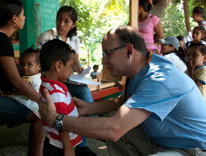 For Asturias the project is literally about coming home and giving back. He expects to use information gathered here to plan for the new facility, focusing on what kind of health intervention is needed most. It is a daunting, yet exciting prospect.
For Asturias the project is literally about coming home and giving back. He expects to use information gathered here to plan for the new facility, focusing on what kind of health intervention is needed most. It is a daunting, yet exciting prospect.
“We do a lot of international research but this is our first permanent presence in a developing country,” he said. “Our people are some of the best in the United States and now we can offer them this kind of regular experience outside of the country.”
No charge
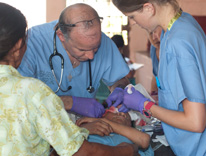 The next morning in the hamlet of El Troje, Asturias and Mehner were doing routine physicals at a school when a crying child was hustled toward them with a deep gash on his head.
The next morning in the hamlet of El Troje, Asturias and Mehner were doing routine physicals at a school when a crying child was hustled toward them with a deep gash on his head.
Asturias quickly laid him on a table. Children gathered to watch as he injected anesthesia into the wound and began sewing it up. The unflappable Mehner nimbly assisted, cleaning the cut while soothing the bloody, sobbing 8-year-old.
Twelve stitches later and it was over.
The boy’s mother, a weary looking woman with deep lines on her face, cautiously approached.
“How much do I owe you?” she asked quietly.
Asturias wiped the sweat from his face and smiled.
“Absolutely nothing,” he said.
